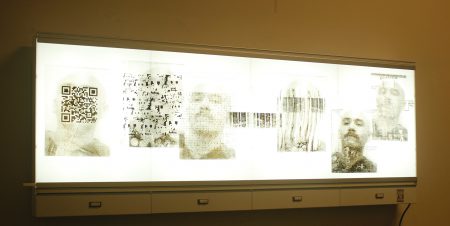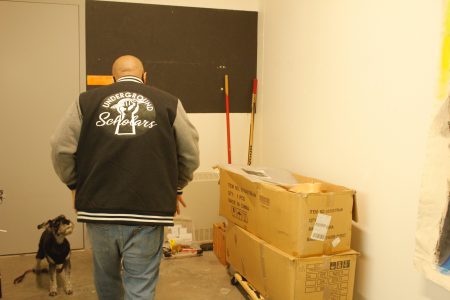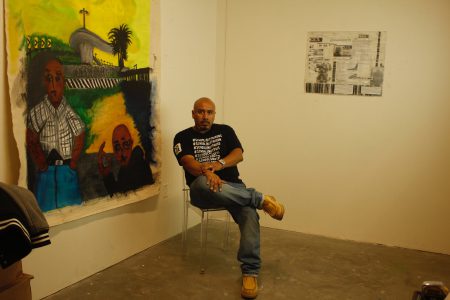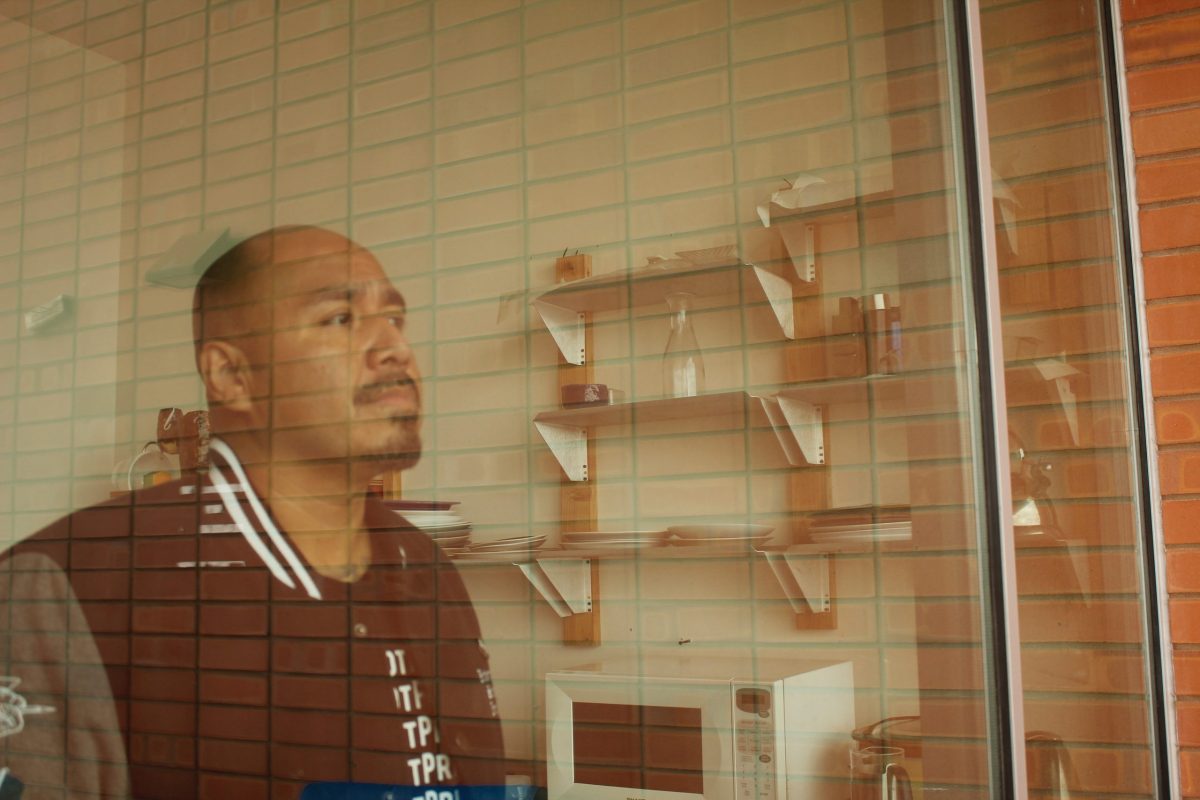Alberto Lule was finishing a six-year sentence at Ironwood State Prison in Blythe, Ca. He was serving time after pleading ‘nolo contendere’ on drug possession, receiving stolen property, and conspiracy, when things took a turn for the worse. He got tangled up in a fight that left an inmate stabbed, which led to eight more years on his sentence, a second strike and time in solitary. It seemed like things couldn’t get any worse for the former graffiti artist whose gang affiliations led him to a life of incarceration. But while in the hole, he met an old man named Enano, which in Spanish translates to “short guy”. Little did he know, Enano would be the catalyst to help him change his life.
“One day in the yard Enano tells me ‘Ey you’re the foo who helps people with their homework and stuff. Eh, what are you doing here in the hole? You don’t belong here.’ I didn’t like that, I felt like he was telling me I was weak or something,” Lule recalls.
He didn’t like it, but it got him thinking.
After spending 14 years incarcerated at several federal prisons, Lule was released in 2016. When he got out, he immediately pursued a higher education. In 2020 he graduated with a BA from UCLA’s School of Arts and Architecture. He is currently enrolled at the University of California, Irvine on a mission to earn a Master of Fine Arts degree. He is also an activist who through his art brings awareness to the prison industrial complex, mass incarceration, and ICE camps. Last year he was invited to display some of his work at the Fullerton College Art Gallery’s online exhibition, Language Games.
He first joined the Underground Scholars on top of being a full-time student, Lule has made the time and effort to join many clubs. He first joined at Santa Barbara and by the time he made it to UCLA he was Co-chair of the club. They help formerly incarcerated men and women pursue their education. He is also active with XMAPS: In Plain Sight, which is a movement to bring awareness to ICE detention facilities. They spread awareness by writing messages with an airplane that leaves hashtags in the air above detention facilities.
A piece of work that encompasses Lule’s unorthodox style would be his mugshots with QR codes to his criminal record called “Am I Truly Free (New Forms of Identification).” It was displayed at Fullerton College’s online exhibition last year and brings insight to the negative stigma that an “ex-con” has to carry with them for the rest of their life. His most recent work of activism is his “Investigation Series,” which focuses on prison reform. Through this series, Lule presses his bare skin against large pieces of plexiglass and then spreads black powder, similar to what forensic teams use, over the oils that were left from his body in order to create foggy, ominous and expressive imagery. In a recording of this ritualistic process, he has a helper who manipulates his body like a correctional officer would an inmate.

“Making this type of art is like performance art. That’s why I started to record myself. It’s like the journey of making my art that I find spiritual,” Lule says.
Although he’s in graduate school now, Lule was not always the trained artist he is now. He got his start from writing in the streets. All art is important because it is a form of expression that has the ability to tell a story. Outsider art is a relatively new type of art when compared to the origins of art itself. The term self-taught artist has evolved since its inception. The beginnings of the term outsider art can be traced back to Robert Cardinal who was originally writing a book on the term, art brut, which was initially narrowly defined as art that was made by children or patients of mental illness. The term art brut expanded to outsider art and in recent years has been best defined as self-taught art. The realm of outsider art enabled Lule to change his life for a better future.
Raised on the west side of Santa Barbara, Lule comes from a family of undocumented immigrants. His father Luis was a hardworking handyman and his mother Adela was a housekeeper. His father gave him his earliest memories of art, drawing doodles for him as a child and Lule was always impressed. Lule was only a little boy when he began graffitiing walls in the early nineties.
“I was 10 or 11 when I started tagging on walls with my friends,” he said. “We started doing stuff together and eventually, it turned into a tagging crew. Looking back at it though, I realized I focused on everything that came with being a writer, which is what graffiti artists would call each other. Being a writer meant that you had to steal your own paint, you had to tag on freeways, like doing legal walls was wack.”
Lule began to enjoy the reputation that came with being a writer because it brought praise from the streets when his writings were noticed. After using spray paint to graffiti, Lule began to get more inspired by other artists such as Emory Douglas, who is known as the minister of propaganda for the Black Panthers. Douglas’ art is in the style of Russian constructivist propaganda. This type of art influenced Lule to begin wheat pasting, which is an inexpensive form of stencil art.

Lule mentions that his friends stopped calling him a writer when he began his wheatpasting stage, but that didn’t faze him. He noticed he started to fall in love with the journey of creating the art over the final product itself. From either making or stealing materials to plotting a spot to post his work for homies to see, it became more about the ‘process’ he says. At 11 years old, writing introduced him to a life of small crimes such as stealing paint and vandalism, but that quickly spiraled into other things like grand theft auto and gang violence by the time he was in high school. This slippery slope of a lifestyle got Lule introduced to “the system” at the age of 15.
“I had many slaps on the wrist,” he says. “But at 15 was when I first went to juvie for stolen property.”
He was constantly in and out of juvenile detention centers for small crimes. At 15 he was in a carjacking ring where he would steal cars with his friends and drive them down to Tijuana and sell them. This lifestyle ultimately got him indicted for murder at the age of 25. After two years of fighting his case, he took a plea bargain where the prosecutors dropped the murder charge if he plead guilty to other charges composed of recieving stolen property, possession of controlled substance(s), conspiracy and he also got a gang enhancement. After two years in jail fighting his case, his sentence was reduced, leaving him to serve four more years.
“It began in Wasco, then Calipatria, then Ironwood, then Mississippi and then California City,” he says. “Part of prison overcrowding had California shipping inmates out to other states.”
Walking into prison, Lule felt that he was prepared for what was to come. He had already been accustomed to being processed. He had friends who told him what he could expect, so when he went in he was there to prove he was not to be messed with. Aside from exercising out in the yard and drawing, to stay busy Lule would occasionally dabble into some college courses that were offered at Ironwood.
That’s where he got caught in a fight that extended his sentence for another eight years. After his time in the hole he couldn’t get Enano’s words out of his head: “You don’t belong here.” Lule had to find alternative ways to keep his mind busy. He went back to his artistic roots and began drawing. Lule’s first style in prison was inspired by a lot of his Chicano background because, up until then, he didn’t have any formal training with art other than graffiti and wheatpasting background. His first drawings in prison would include clowns, women, smile-now-cry-later masks and a lot of institutional-type buildings. He mentioned that many of the other inmates would pay him with goods from the commissary for him to draw for them or decorate envelopes that they would send out. Some guys even began to volunteer themselves so that he could tattoo them. Through his passion for art, he developed a genuine curiosity for higher education. He enrolled in more college classes through the prison and drowned in different kinds of literature. Some of his favorites include “The Count of Monte Cristo,” “Les Miserables” and “The Autobiography of Malcolm X.” By the time Lule walked out of prison a free man and self-taught artist, he had college credits, informal tattoo experience and more than anything else he had will and determination.

“My main goal was to never go back to jail or prison,” he says. “When I told the homies I was never coming back they all laughed and said, ‘You’ll be back even if it’s just for a little. Everyone comes back.’ But I didn’t like that. As a man all I have is my word. You carry that around everywhere.”
Even though Lule has always been a person who makes things, his satisfaction has always come from the actual making and not the end product. In an interview with Diversity in the Arts Today, Roger Cardinal, writer of ‘Outsider Art’ says, “A lot of outsider art rotates around issues of personality, of asking who I am, which means going deep into the inner self of an individual.” Lule is the epitome of what Cardinal was referring to because of his ability to look within himself and express his struggles in a way that brings light to societal issues.


